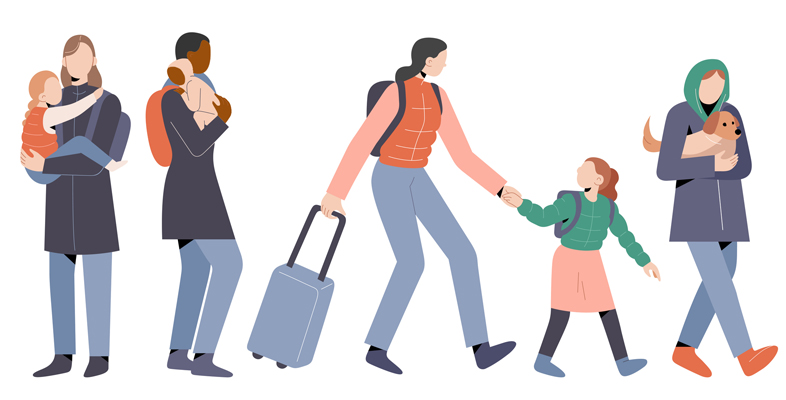4.1 Immigration facts and figures
There is often confusion about migrants, asylum seekers and refugees, including the terminology used and their perception as a threat. In the following activity you will have the opportunity to test your knowledge about the numbers behind the headlines. The Refugee Council website [Tip: hold Ctrl and click a link to open it in a new tab. (Hide tip)] is a useful place to find up-to-date information. To avoid losing your place in the course, if you are studying on a desktop you should open the link in a new tab or window by holding down Ctrl (or Cmd on a Mac) when you click on it. If you are studying on a mobile device hold down the link and select to ‘Open in New Tab’. Return here when you have finished.
Activity 1 Myth busting: how much do you know?
1. Which countries do asylum seekers mainly come from?
Answer
Asylum seekers come mainly from countries where there is political or military conflict, such as Syria, Iran, Pakistan, Iraq and Afghanistan. This changes from year to year.
2. Are asylum applications in the UK going up or down?
Answer
Asylum applications in the UK have declined significantly since their peak and remained relatively stable since, although there has been some recent increase.
3. In what year did asylum applications peak?
Answer
Asylum applications (excluding dependents) peaked at 84,100 in 2002 and reached a low of 17,900 in 2010.
a.
100,000
b.
10,000
c.
50,000
The correct answer is c.
Answer
After several years of relatively stable numbers of asylum applications, there has been a recent increase after the COVID-19 global pandemic. There were 48,540 applications, which is still around half the level of the previous peak in 2002 (84,132 applications).
Unaccompanied children and young people
There were 3775 applications in 2019 and 3762 applications in 2021 in relation to unaccompanied children and young people seeking asylum. There has been an increase in applications from Iran, Iraq and Afghanistan.
In 2017, 89 per cent of applicants were male.
There were 712 age-disputed cases in 2017; in 55 per cent of these the decision was taken to grant refugee status. This demonstrates that the initial decision was incorrect in just over half the cases.
a.
£100 per week
b.
£57.90 a week
c.
£40.85 a week
The correct answer is c.
Answer
£40.85 a week.
6. Approximately how many people are trafficked each year in the UK?
Answer
In the UK in 2019, approximately 10,000 potential victims of trafficking and modern slavery were identified.
7. How many of these were under the age of 18?
Answer
Nearly half of all potential victims were under the age of 18.
8. What countries do the children come from?
Answer
The most common country of origin of these children was the UK (32%), followed by Vietnam (17%), Albania (10%), Sudan (7%) and Eritrea (6%).
More than a quarter of all trafficked children go missing from local authority care each year in the UK.
Discussion
There is a great deal of confusion about the number of asylum seekers and refugees in the UK and the amount of support that they receive – in 2016 just over £5 a day. The numbers of asylum claimants is low compared with net migration to the UK as a whole.
The Refugee Council points out that:
- asylum seekers and refugees do not receive large handouts
- asylum seekers and refugees are law-abiding citizens
- refugees make a huge contribution to the UK
- Britain’s asylum system is very tough
- poor countries look after most of the world’s refugees.
